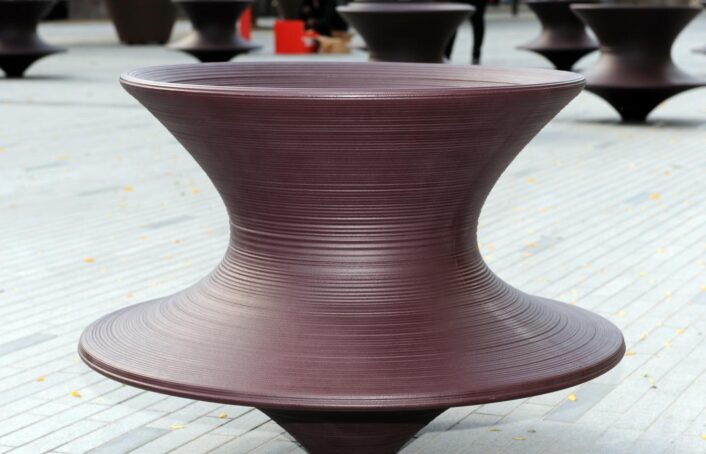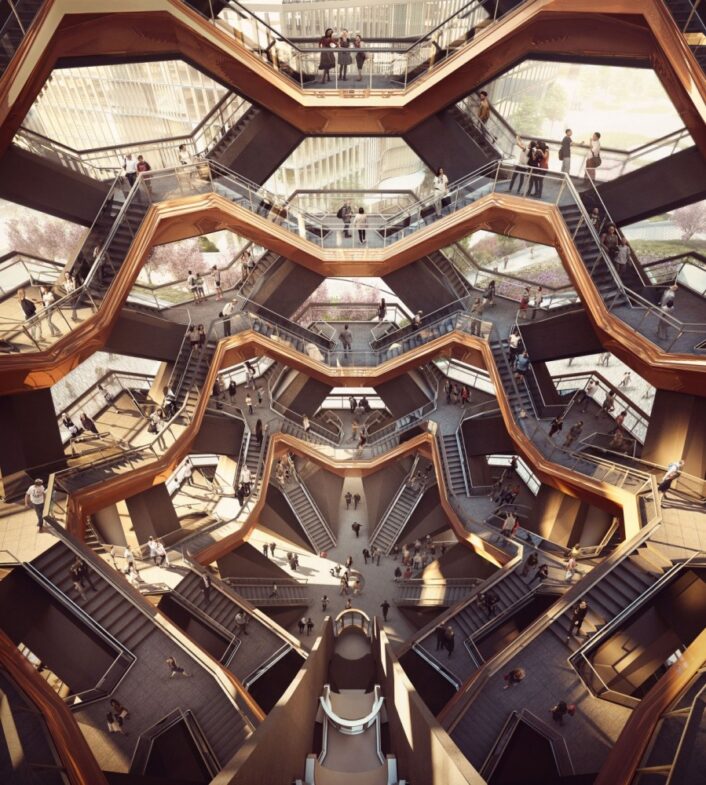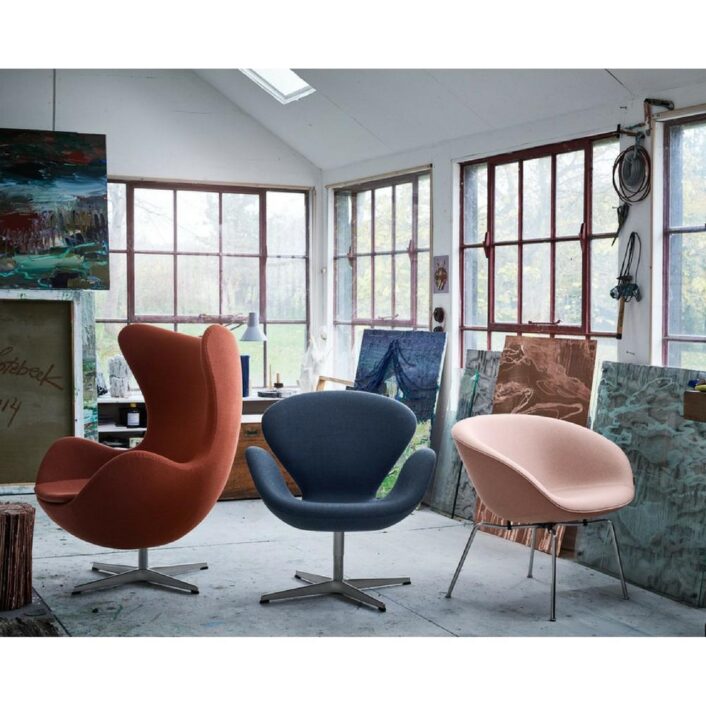Design
Thomas Heatherwick’s Spun Chair… in granite
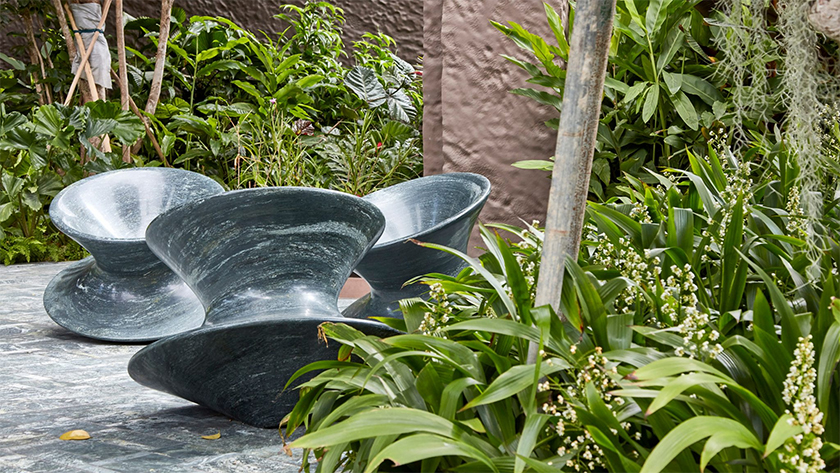
These granite Spun Chairs were made specifically for EDEN, the newly opened skyscraper in Singapore.
Image courtesy of: Dezeen
The original Spun Chair was designed by Thomas Heatherwick in 2007. The chair presented an exploration on whether or not the process of metal spinning could create something to sit on. The finished piece was a completely symmetrical form that could act as a chair no matter which way it was rotated.
Initially, the company debuted a limited edition of these metal Spun Chairs. Thomas Heatherwick Studio then collaborated with the Italian furniture manufacturer, Magis, to develop a version of the chair in moulded polypropylene. Recently, a third version of the chair was introduced… this one was made from granite.
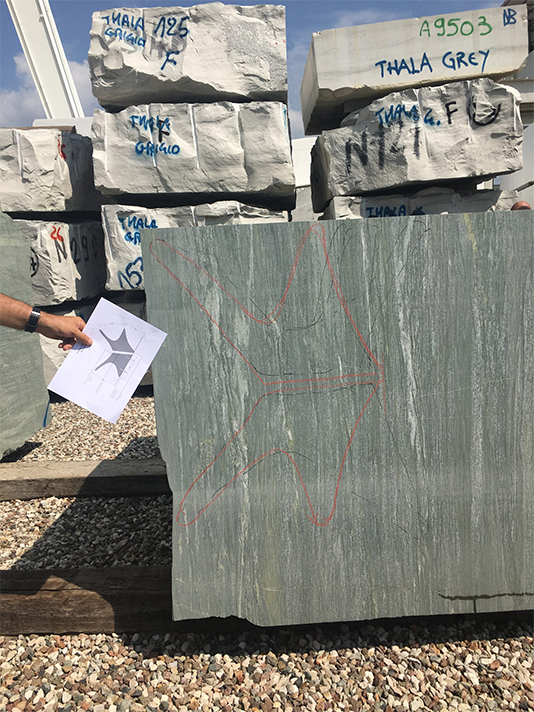
A slab of Pannonia Verde granite.
Image courtesy of: Dezeen
The Spun granite chairs were made from an Austrian granite called Pannonia Verde. Placed in EDEN’s plaza, they were created after the building’s developer, Swire Properties, asked the studio to design a sculptural work for the garden area. Granite was chosen for this outdoor version of the chair due to its durable nature. Since the chairs were heading to Singapore, it was necessary to ensure that the material from which they’re made could withstand a tropical climate.
Tom Glover, Heatherwick Studio’s project leader, said (courtesy of an interview with Tom Ravenscroft for Dezeen), “When we got the commission from Swire’s it gave us a motivation to explore materials that would be sculptural, beautiful and would withstand the tropical Singaporean climate, ranging from intense heat to monsoon rain and very high wind. The material also had to be very robust as the intention is for it to be outside for many, many years. We eventually chose Pannonia Verdi, a green granite from Austria. The challenge we then faced was how to craft the chair from such a hard stone.”
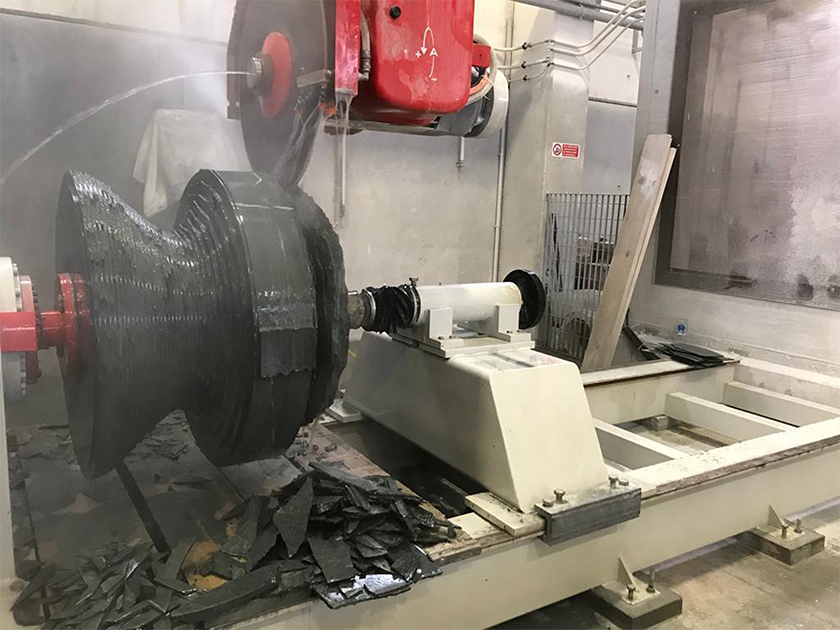
The Italian fabricator, Matter of Stuff shaped the chairs
Image courtesy of: Dezeen
Each chair was made from a singular piece of rock that was specifically chosen for its color and grain combination. After the slab was selected, granite pieces were shaped on a large CNC lathe that employs a six-axis cutting tool before getting polished by hand.; luckily, the fabricator helped with this process.
Unfortunately, since the chairs are so heavy, they needed to be attached to the ground. As such, they do not spin like the other Spun Chair iterations. The good thing is that since the seating surface is highly polished, those sitting in the chair can spin themselves within the seat while seated.
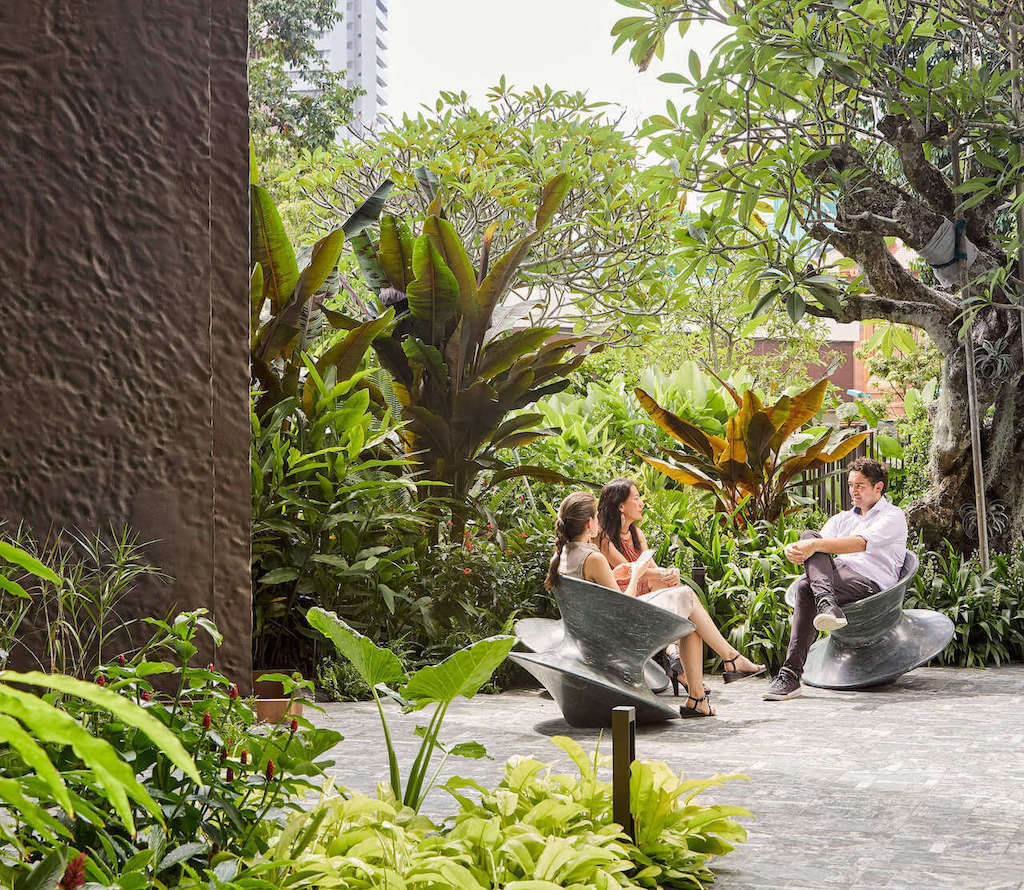
Heatherwick Studio also designed the EDEN skyscraper!
Image courtesy of: Design Wanted
From the very first Spun chair design, the plan was to have the chair take on different iterations with different materials. Aside from granite, metal, enamel, cedar, and leather have been used. The expectation is that the studio continues to experiment with making the chair from other materials.
Glover said, “Materials are at the core of everything we do and we are at heart a studio of makers and experimenters so it is not only fun, but the lifeblood of what we do as a studio. We feel the Spun chair has an identity that has evolved beyond describing the process of making.”
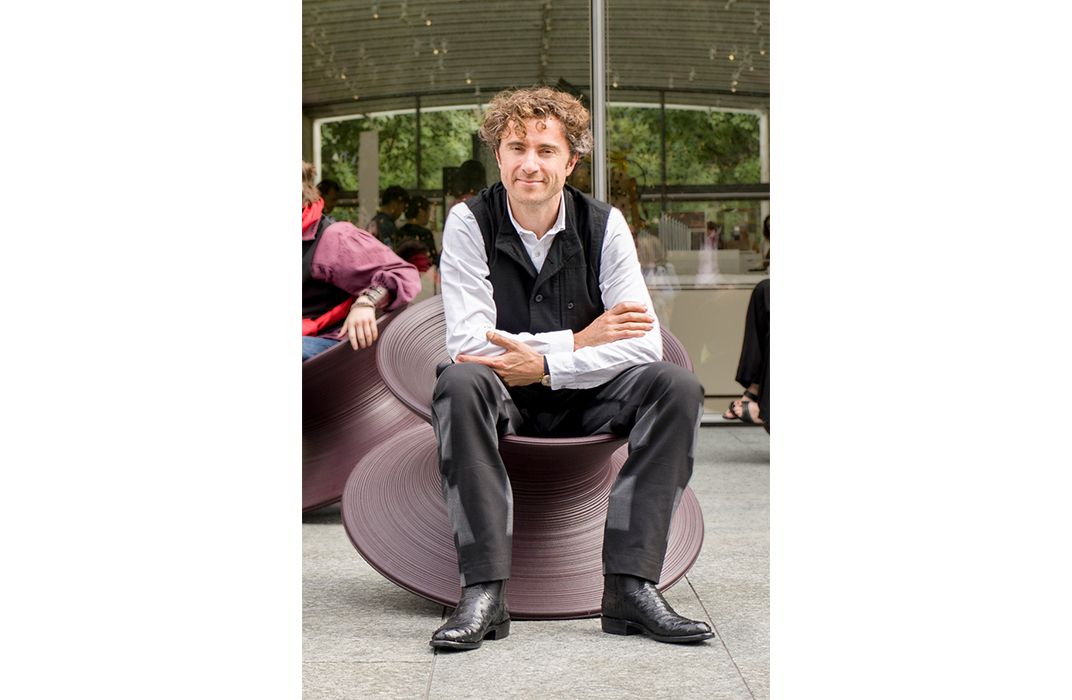
Thomas Heatherwick on his invention.
Image courtesy of: Smithsonian Magazine, photographed by: Evan Chavez
Heatherwick Studio now has nearly 200 people under their umbrella. The team is a mix of architects, product designers, engineers, and landscape architects. In addition, there are several photographers, set designers, and craftspeople on staff. Staff is organized into project teams. The studio has worked on a wide range of architectural projects, the Spun Chair is a departure from his usual work.
Heatherwick is interested in finding new solutions that may yield objects dissimilar to things the world has previously seen. He is, however, not interested in rethinking commonly familiar objects. Thus, there is no fear of Heatherwick remaking a plate or a skillet. He is not a designer who wants to try and “re-invent” the wheel; he is more likely to wonder if we need wheels at all? About himself, Heatherwick says, “The challenge isn’t just having ideas. It is making ideas exist.”
